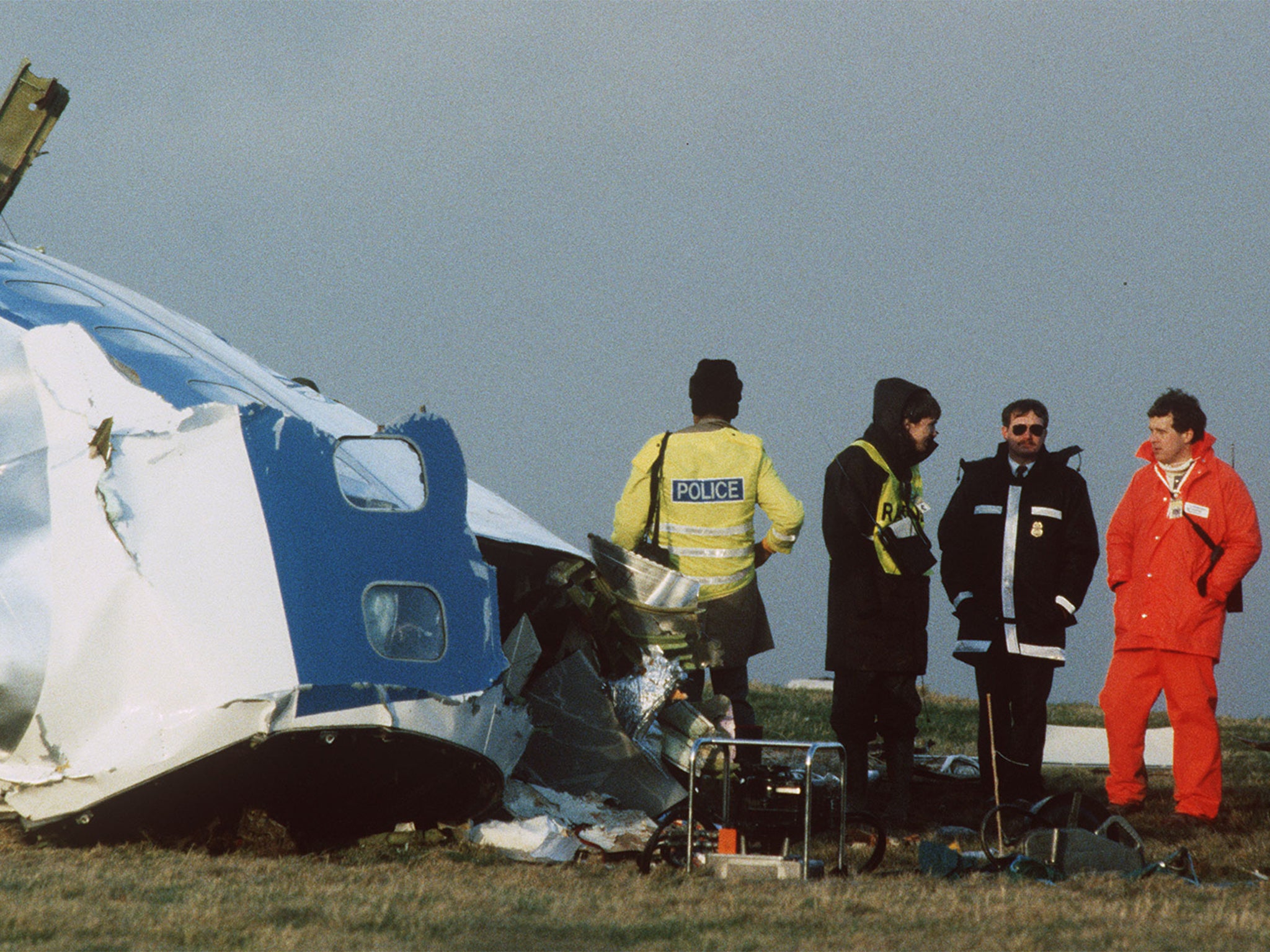We failed to learn from Lockerbie, and repeat our mistakes at peril
If you accept a porous account then what lessons you claim to have learned will be worthless

Your support helps us to tell the story
From reproductive rights to climate change to Big Tech, The Independent is on the ground when the story is developing. Whether it's investigating the financials of Elon Musk's pro-Trump PAC or producing our latest documentary, 'The A Word', which shines a light on the American women fighting for reproductive rights, we know how important it is to parse out the facts from the messaging.
At such a critical moment in US history, we need reporters on the ground. Your donation allows us to keep sending journalists to speak to both sides of the story.
The Independent is trusted by Americans across the entire political spectrum. And unlike many other quality news outlets, we choose not to lock Americans out of our reporting and analysis with paywalls. We believe quality journalism should be available to everyone, paid for by those who can afford it.
Your support makes all the difference.“Game-changer” always sounds an insightful phrase. The president of the Emirates airline said that’s what happened in Sharm el-Sheikh last week. The Russian Airbus A321 disintegrating in mid-air, and the recent Germanwings disaster when the pilot committed suicide and took the lives of his 144 passengers, were “game changers” for his industry. The message is that an unrecognised element was introduced into the way we travel the world, and significant changes are required to improve safety.
The Foreign Secretary, Phillip Hammond, warned that if the Metrojet flight was brought down by an explosive device planted by Isis, or somebody inspired by them, then the security regime at airports worldwide needs to be drastically toughened up. Forecasts of check-in times five hours ahead of departure have followed.
Key to whether these changes will be effective – and able to prevent a repeat attack – will be the international investigation into what happened at Sharm el-Sheikh and how a bomb, if that’s what it is, made it on to the aircraft. For those of us who have spent years investigating the causes and consequences of the 1988 Lockerbie bombing, it all sounds disturbingly familiar.
The downing of Pan Am Flight 103 in December 1988 was a terrorist outrage, perhaps the critical aviation “game-changer”. A bomb inside a Samsonite suitcase found its way into the hold of the Boeing 747 and, 38 minutes into its flight to New York, it exploded at 31,000 feet causing the metal fuselage of the aircraft to peel off. These facts are not contested. A unique international tribunal, when a Scottish court sat on neutral territory in the Netherlands, found that one man, a Libyan airport official with minimal links to his country’s intelligence service, was responsible for the mass murder of 243 passengers, 16 Pan Am crew, and 11 people from the Scottish town of Lockerbie.
But if we are to learn the lessons of what happened to the Russian jet above the Sinai desert, and correctly adjust our airports’ safety regime, then the 2015 investigation cannot be allowed to limit itself to the inadequacies and questionable evidence that continues to haunt the official explanation for what happened to Flight 103. The Egyptian investigation – with, one assumes, an input from international air disaster investigators – will want to find the origins of any bomb, where it was made, how it reached Sharm el-Sheikh, and how it bypassed the airport’s human and digital screening. Answer these questions to a level beyond reasonable doubt, and whatever inconvenience passengers find at airports in the future will be understood and tolerated.
Were similar questions adequately answered after Lockerbie? Absolutely not. Have they been explained in the 25 years since? Sadly, no, not even close.
Questions remain unanswered. How did one suitcase, which contained Semtex occupy a precise bottom-row location close to the edge of the aircraft’s hull? Seven containers were filled with luggage that came from Heathrow Terminal 3. An eighth container, marked AVE4041, was for baggage from a transfer flight from Frankfurt. No screening of the eighth container took place. One of the loading area staff in Heathrow initially told police he had noticed a single hard-shell suitcase already loaded at the bottom of AVE4041. This scenario was expected to be re-examined had a Scottish appeal court been allowed to test the conviction of Abdelbaset al-Megrahi. If the bomb in the suitcase was loaded at Heathrow, then Megrahi and the official account of the Libyan’s movements in Malta all begin to look unconnected. The Heathrow flight was also delayed, suggesting that if the bomb was loaded in Malta and on a timer, it should have exploded before it took off in London.
Does it matter that such detail remains the subject of debate? It does. Because if you accept a porous account and decide that a weak explanation is better than no explanation, then whatever lessons you claim to have learned will be worthless. If the conviction of Megrahi was merely a convenient round-up of the Libyan bad guys, then the Scottish justice system (and, by implication, its British counterpart) are damaged by pragmatic injustice.
The failures of Lockerbie should serve as warning to the investigation that will come in Egypt. The objective should be the truth. Anything less and all we will do is wait for the next “game-changer”.
Join our commenting forum
Join thought-provoking conversations, follow other Independent readers and see their replies
Comments